|
Introduction Cafes function very well as informal public gathering places. One can enjoy the company of others or be quite comfortable alone. And they are great places to sit and watch people. The online world also functions as a public gathering place. As in the cafe, conversation is one of the primary activities - but with some striking differences. Online, conversing with strangers is quite common and there are few barriers to such interactions, while in the real world such encounters are less common and occur couched in complex social rituals. In the online world, one is fundamentally alone: although there are many others virtually present, one's sense of their presence is minimal. In the real world cafe, the number of people is fewer, but their presence is far greater. These two worlds come together in the Chit Chat Club. It is a real cafe, with real tables, real coffee and pastries. Yet the customers seated round the tables may be present physically or virtually -- some of the chairs are ordinary seats, accommodating the human form; others are seats for avatars, equipped with monitors and network connections.
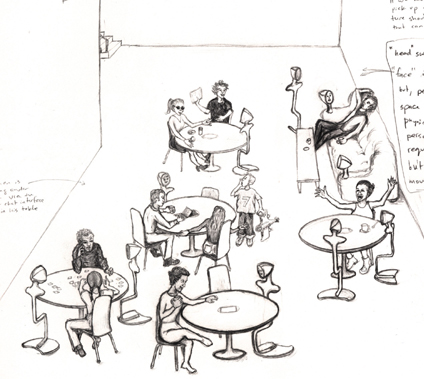 Figure 1. The Chit Chat Club (Click for detailed view).
The Chit Chat Club The Chit Chat Club will be a cafe with 5-15 tables (depending on the venue and resources), each with several chairs for people to sit in as well as one or two avatar chairs. There are multiple ways to interact with others in the Chit Chat Club. As in an ordinary cafe, people can walk into the physical Chit Chat Club space, order a coffee, sit down and talk with others and people watch. One can also enter the Chit Chat Club remotely through the website and occupy an avatar chair. This action opens a real-time two-way audio and graphical connection between the physical space and the online participant. Finally, a person physically present in the Chit Chat Club space may also occupy an avatar chair.  Figure 2. Avatar chairs at table.
The avatar chair The avatar chair is designed to let the remote participant be a real presence at the table. It is human scale: the monitor is at ordinary head height at the table and the face in it is human scale. The chest area of the avatar chair houses a screen to display text that an online user types in. For people in the physical space, this is like reading an ever-changing t-shirt. 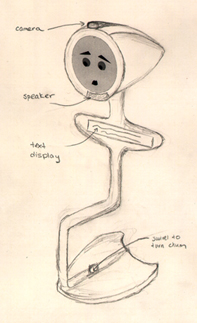 Figure 3. The avatar as it appears to physical participants. The chair has a camera, a speaker, a text display, and a swivel at the base so that physical participants may alter the online participants gaze. A small camera mounted on the avatar's head allows the remote visitor to see others at the table. The chair - and thus camera & monitor - can swivel. The online participants do not have robotic control of their chair: it is up to the people physically present to facilitate the movement of the avatars. Thus, what the virtual visitor can see is negotiated with those who are physically present.
The online site The online site is a portal for the remote visitors to enter the Chit Chat Club. Using the Chit Chat Club website, the remote cafe attendees can create an appearance for their visit, they can choose where to sit, and they can converse with the cafe's local participants using either audio or text. While they are conversing with the visitors of the physical cafe, they see an abstracted video representation of their table companions from the point of view of the avatar chair they occupy. Although the remote visitors may type as well as speak to converse, they always hear what the cafes's physical participants are saying. When an online participant first encounters the online Chit Chat Club interface, they are presented with an interface for creating an avatar face (Figure 4).
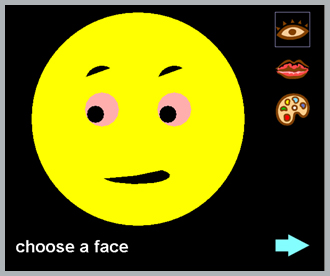 Figure 4. Face construction interface. Using this interface, the visitor can customize the appearance of their avatar's face. They may choose face shape, eyes, lips, as well as the color of each feature. The avatar faces resemble cut-out animations ( Figure 5).
After the visitor creates their appearance, they are ready to proceed to the Chit Chat Club entrance. Here, they see a graphical birds-eye view of the layout of the physical space (Figure 6). This representation shows the location of the tables, chairs, and avatar seats and shows which seats - regular and avatar - are occupied. The participant uses this image to select which avatar chair to occupy.
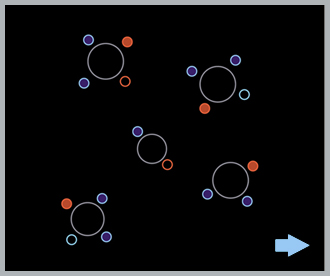 Figure 6. Graphical overview. Avatar chairs are red and regular chairs are blue. If the circle for the chair is filled, the chair is occupied.
Once a seat is selected, a two-way audio and video connection is established. In the cafe, the remote participant's avatar face appears in the chosen chair. At the remote location, the participant sees a live, processed image of the cafe as seen from that chair (Figure 7) and can hear and participate in the conversation at that table.
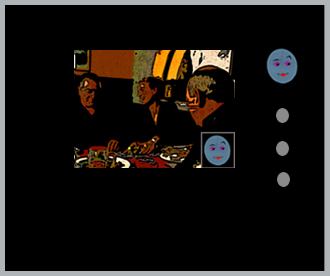 Figure 7. The Chit Chat Club as seen by the remote participants.
While connected, remote visitors can communicate by talking or by typing and can momentarily change their avatar's expression to surprised, happy, angry or sad. Participants who have slow connections or who do not wish to speak out loud may choose to type rather than speak; their typed words appear on the avatar's LED chest screen. Conversation from the cafe to the online participant is still received in the form of audio and processed video.
Virtual visits The virtual visit allows for a person in the physical Chit Chat Club to also occupy an avatar chair at another table. Each table has an embedded LCD display with touchscreen that accesses the online site. Thus, people at the Club do not know if the person behind the avatar sitting at their table is a remote visitor, hundreds or thousands of miles away - or one of their fellow patrons from across the room. The possibility of virtual visits in the Chit Chat Club introduces an ambiguity that challenges our model of mediated communication: how one might act toward a distant, inaccessible person may be quite different than how one acts towards the person at the next table. It also alters the nature of people watching, allowing one to anonymously join the company of the intriguing stranger.
Design note: The physical tables and chairs Social activity in the Chit Chat Club centers around the tables and it is here that the physically and virtually present visitors encounter each other. The tables and chairs are designed to facilitate this interaction. A key goal is to make the interface simple and intuitive. While we are not trying to erase the boundary between the physically and the remotely present, we want the cafe visitors' attention to be drawn to the interaction they are having with other people in other locations, not to the technology itself. We have thus avoided the use of technical paraphernalia such as active badges, smart cards, even keyboards and mice. In some cases, the technology is transparent to the user, e.g. pressure sensors in each chair sense whether the seat is occupied with no action (apart from sitting) required from the user. In other cases, simple actions, such as physically swiveling the avatar chair to adjust the remote user's gaze, have been chosen over more complex robotic technologies. Where possible, the technologies have been integrated into the furniture itself, thus preserving the traditional form of the cafe while simultaneously transforming the function of its component elements.
Big questions As the virtual world and physical world actually merge in Chit Chat Club, meanings, functions, actions and effects of space and presence must be re-perceived by the participants. What are the new social codes and personal proxemics to be negotiated in places shared by people present in their own bodies and people present via embodiment by physical avatars? In the physical world we get a sense of others - we make assumptions and interpretations based on very subtle clues. How much and what will people in the physical space infer about the online participants versus how they interpret people who walk into the physical Chit Chat Club off the street. In the physical world, we are more likely to believe that a new acquaintance is a trustworthy person if we observe that other people that have interacted with that person feel trusting towards him/her. Will the online participants feel like the people present in the physical cafe whom they are socializing with are more believable than other online participants as a result of there being multiple people together physically in the physical cafe space thus reinforcing each other? Initiating conversation online is easy. It allows for low-risk conversations with strangers. Will merging the ease of online conversation with the physical space of the cafe promote conversation among strangers? Are the people present at any given table more open to mingle with strangers at other tables as a result of their sense of boundaries being in a state of new negotiations already in Chit Chat Club?
Technology In the cafe, each table will be include one or two avatar chairs and two or three regular chairs. The technologies embedded in each of these include: - Table: 2 PCs, omni-directional
microphone, LCD touch-screen. The first PC is used to digitize the audio and video from the physical cafe participants for sending to the online participants; it also handles playback of the audio and/or text from the online participants for the physical participants as well as the avatar face animations. The second PC and the touch-screen LCD display is used for setting up virtual visits from one Chit Chat Club table to another. The omni-directional microphone on the table and the camera on the avatar chair are used to capture audio and video from the table The speaker on the avatar chair plays back the audio from the online participant, the NTSC screen displays their avatar face, and the screen on the avatar chair's chest displays their text. To communicate via text, the remote participant needs a PC with a network connection (min 56K modem) . To participate via two-way audio, one needs an additional microphone and the standard NetMeeting client available for free download at Microsoft's website (preferrably 2 Mb+ network connection). The computers in the Chit Chat club will be connected to one hub which in turn is connected to the outside network. The preferred network speed for the machines in the cafe is 100Mb/sec. The audio libraries will be written in C++ and use the NetMeeting API. The online users use the standard NetMeeting client to communicate. The video libraries at the online end will be written in C++; the video application for the avatar chair will be written using the Java API's.
Ideal Cafe Management and Location We would like to provide coffee and pastries to the visitors in the physical space to enhance the social experience. This will require a small coffee bar, a waitstaff, a manager, and technical backup. Another design concern for the table interface dealt with how to handle queing of online participants. For example, if there are twenty people waiting to participate online, should we impose timing constraint - let's say each online participant can occupy an avatar chair for only five minutes unless explicitly re-invited to remain at the table by the physical participants. This is done by tapping the invite button on the LCD screen. Our approach is to leave the decision to the cafe manager depending on how "crowded" the cafe is, both physically and virtually. |